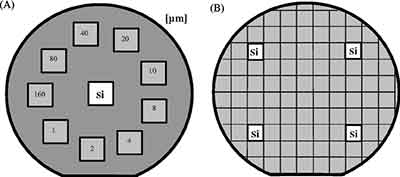Planar and Pattern Film Wafers
Wafers for Planar and Pattern Thin Film Research & Production
Planar and pattern film wafers offer a number of advantages over traditional manufacturing methods.
These film wafers allow for smaller, more densely packed circuit features. This leads to smaller devices with more functionality. Additionally, the technology is becoming the standard in the semiconductor industry, offering greater flexibility and a wider range of applications.
Get Your Quote FAST!
What Are The Differences Between Planar and Pattern Film Wafers
Planar and pattern film wafers are both types of semiconductor devices. Their orientation determines the properties of the material, such as crystalline silicon. These two types of substrates are similar in many ways, but the differences are notable. The Miller index can help you select the right chip for your application. The following article will cover the basic differences between these three types of wafers. Here is a brief description of the main differences between them.

Planar and pattern film wafers are generally more expensive than their counterparts. They have higher metallurgical requirements and must be made from a metal substrate. A pattern film can be made from a thin or thick sheet of silicon, thereby lowering the cost of manufacturing. However, planar and patterns film wafers are the most economical choice for many applications. The latter is ideal for applications where the size and weight of the device are not critical.
Both planar and pattern film wafers are useful for manufacturing devices, although the former is often more affordable. Moreover, it allows for close-packing of circuit features. This allows for smaller devices with more functionality. With more flexibility, a large number of applications can be created on a single chip. This technology is rapidly becoming the standard in the semiconductor industry. These advantages are evident when compared to the advantages of conventional methods.
Planar and pattern film wafers both have their advantages. In particular, a thin film can produce larger circuit features in a more compact size. Moreover, it can also be used for manufacturing three-dimensional devices. Incorporation of features on a flexible substrate is also possible, which will open up many possibilities for manufacturers. The benefits include reduced cost, smaller device sizes, and improved functionality per chip.
As feature sizes decrease, the required overlay budgets shrink and the amount of feature space increases. This means that a wafer is highly sensitive to stress and distortion. A planar or pattern film wafer is a more complicated substrate to make. If the pattern is complex, it can be stacked on top of a planar or pattern film. A thin film is more likely to be unstable than a thick one.
Planar and pattern film wafers are important for semiconductor manufacturing. While silicon is the most common semiconductor substrate, non-silicon wafers are also widely used in various applications. The former is more costly than the latter, but it is more efficient for high-temperature applications. When it comes to a non-silicon substrate, the inner surface of the material is oriented differently than the outer surface. This difference is advantageous for the technology because it can be produced in large quantities.
The quality of a planar or pattern film wafer depends on how closely the photoresist image is aligned with the wafer's surface. In the case of planar and pattern film lithoprocessing, the photoresist image must be aligned with the wafer's patterns. By contrast, a pattern-film substrate can be processed much more quickly. And a thin layer of planar or pattern film is more expensive.
The C-axis orientation of the planar film wafer was determined by TEM images. The sidewall AlN films were exposed one rectangular section at a time with step-and-repeat cameras. Neither camera was able to achieve higher resolution than the other. The latter method is also faster. It requires no specialized knowledge or skill. And the best part is that you don't need a PhD to study this.
Using this method, the laser beam is focused on the substrate. The target moves under the scanning beam and the laser writes the desired pattern. The process also helps to improve the optical characteristics of the substrate. In addition to producing high-quality planar films, the LaserWriter system is a versatile tool for surface inspection. With its low-cost structure, it can be adapted for other processes. It can also be applied to other types of semiconductor materials.
The most important advantage of spin coating is the uniformity of the photoresist. Its process requires less time than batch development and results in a low defect density. The spin coating technique is the most commonly used method for producing the highest quality pattern film. A single layer of the silicon photoresist is considered a thin, uniform layer of photoresist. It is important to maintain the thickness and the defect density of the layer when using this process.
